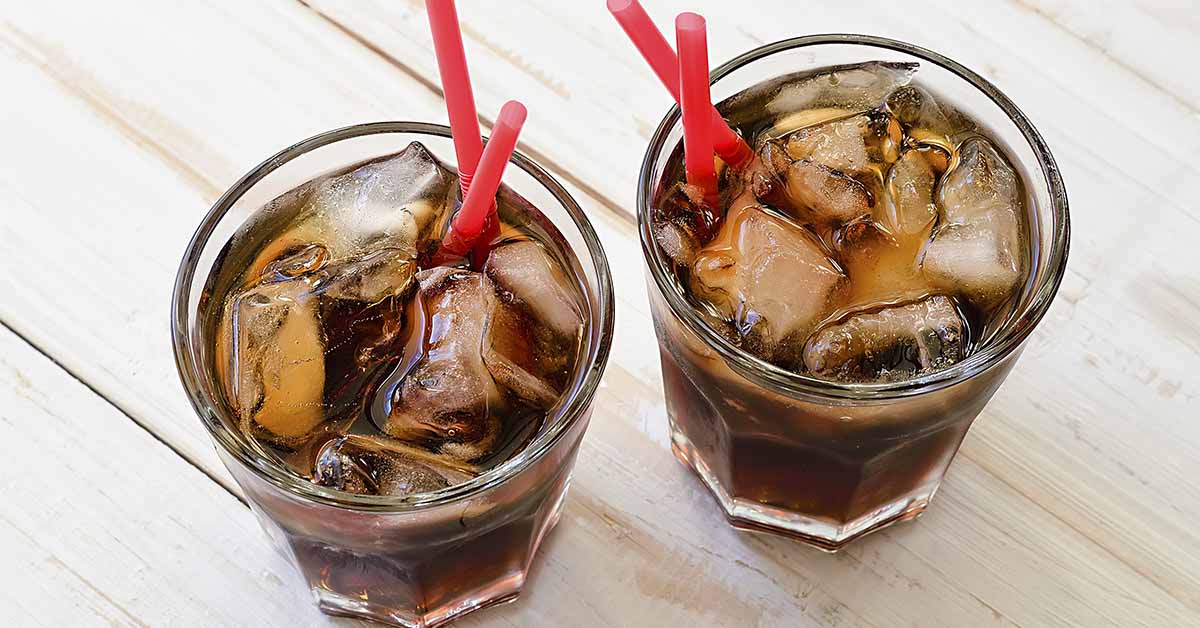Contrary to popular belief, Coca-Cola is not sterile. Pathogens can still grow and thrive despite the carbonation and acidity. Canned or bottled soda might have a long shelf life, but not after you open them and take a sip. This exposes the beverage to oxygen and oral bacteria, creating the perfect petri dish for all sorts of organisms. A remarkable time-lapse video compares the decay of Coca-Cola Zero and Coca-Cola Original. The results demonstrate how mold infests soft drinks with sugar and with artificial sweeteners.
A Time-lapse of Two Cokes
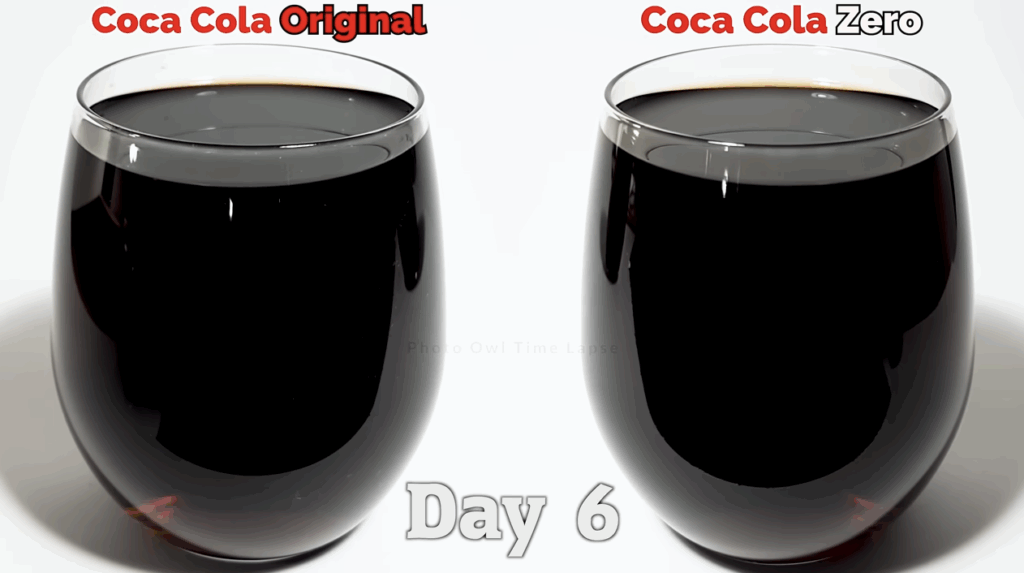
The video, created by Photo Owl Time Lapse, shows two clear glasses side by side. One has Coca-Cola Zero and Coca-Cola Original. At first, the changes are expected. The ice melts and the carbonation goes away. But into the second week, a strange bubbling begins on the surfaces. Then it blooms into spores in an almost mesmerizing way. The original coke becomes dotted with white and gray mold, with larger and fuzzer spots in the center. The spots increase until the entire surface is covered.
Meanwhile, the Diet Coke grows a grayish-brownish mold that almost looks like a crop circle or the top of a muddy road. It begins in the center and grows outward until it reaches the glass. In both cups, the liquid slowly evaporates and leaves the mold on the side of the glass. In Coke Zero, the liquid vanishes completely, leaving the dried colonies caked into the glass. The original Coca-Cola leaves behind a thick, syrupy sludge.
What Happened Here?
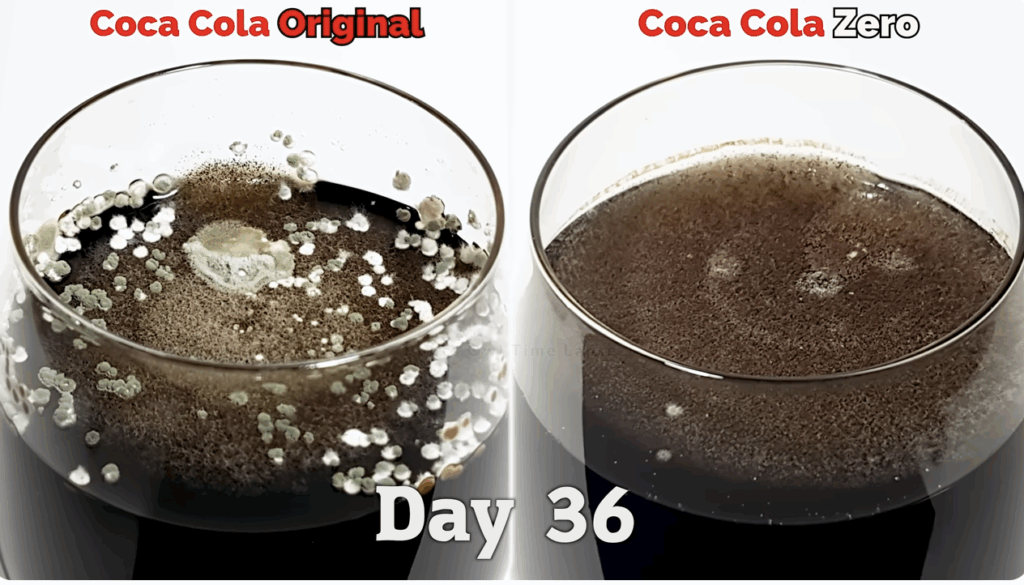
Although the sight is indisputably unappetizing, it brings out many viewers’ inner microbiologists. The comments on the video are full of people speculating what is happening on a chemical level. Some even wished the creator had shown a mold culture, noting how the original Coke grew more diverse microbes while the same spores seemed to grow on the Coke Zero. This could be because many types of bacteria feed on sugar, but fewer flock to artificial sweeteners. Photo Owl clarified in a comment that the cups were about 40 cm or 16 inches apart, so cross-contamination may have occurred.
Many commenters raised the same question: If the mold in the original coke fed on the sugars, what did the mold in the coke zero eat? Mold in general needs moisture, oxygen, and nutrients to grow, states a study in the Journal of Food Protection. Osmophilic molds in particular can tolerate lower water levels and limited nutrients. So when they grow on diet sodas they can consume residual carbohydrates, proteins, preservatives, phosphoric acid, citric acid, coloring agents, or flavor compounds. If the drink is left uncovered, like in the time-lapse, dust and dirt can settle on the surface and further feed the mold. Since there was no culture provided at the end of the time-lapse, it’s impossible to know exactly which spores were involved.
Spoilage in Soft Drinks
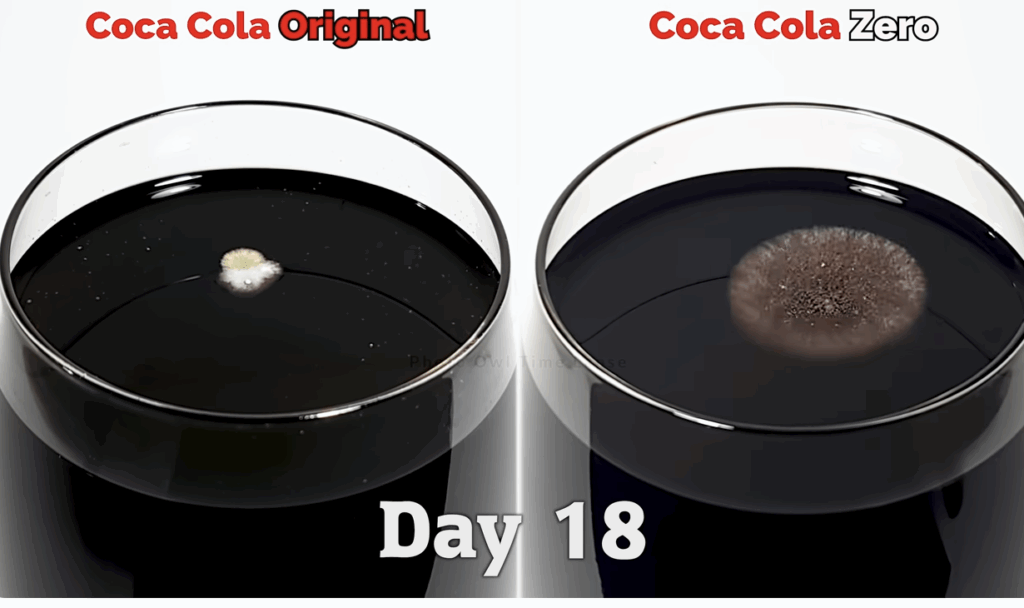
After seeing the time-lapse video, it may be no surprise that carbonated soft drinks can become spoiled. But BCN Labs, a food, beverage, and water testing facility, explains that pathogenic bacteria don’t survive well in most soft drinks. So when they are the subject of public health issues, it’s usually due to contamination from yeasts, aciduric bacteria, and mold. These substances can withstand soda’s acidity, carbonation, preservatives, and a lack of oxygen. When a carbonated beverage becomes flat, like in the time-lapse, it can grow even more types of molds and bacteria. Drinks with tea or fruit juices are even more susceptible to spoilage.
When spoilage occurs in sealed cans or bottles, it’s usually because of environmental contamination or poor sanitation during production. This does happen on occasion, although recent Coca-Cola recalls came from elevated chlorate levels and plastic fragments in the cans. The last Coca-Cola recall due to mold occurred in the 1990s, according to an archived post from the New York Times.
Are Soda Fountains Actually Clean?
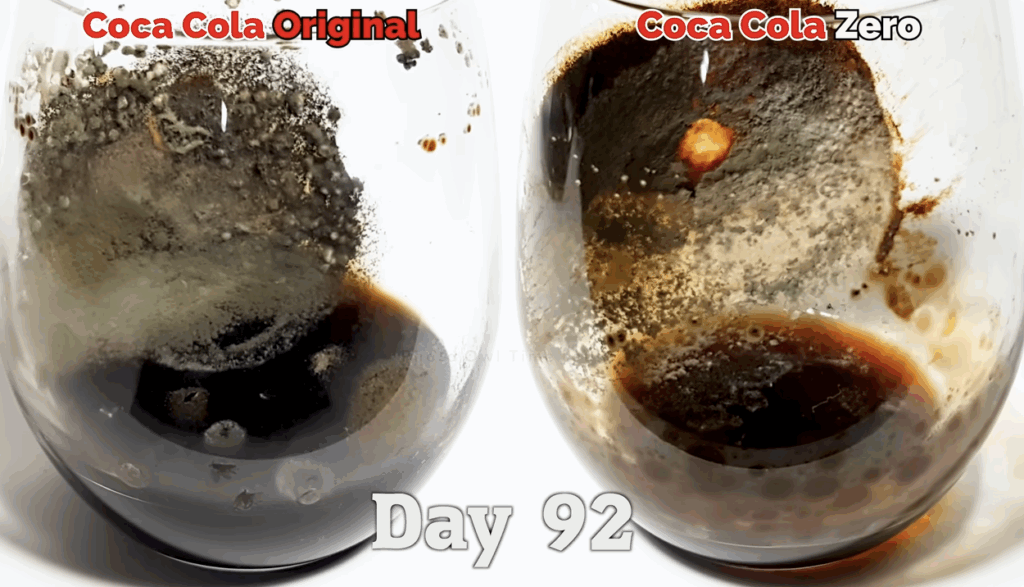
For the most part, people don’t need to be concerned about the health safety of sealed soda products. But as the time-lapse showed, once a soft drink is exposed to air and becomes warm, it becomes more susceptible to all types of contaminants (as does any perishable item). This pertains to a half-finished cup of cola, or a cream soda spill under the fridge. So health concerns arose when a groundbreaking 2010 study found microbial contamination in soda, diet soda, and water in soda fountain drink dispensers. In theory, soda foundation dispensers should be completely sanitized. Most manufacturers recommend that establishments remove and clean the nozzles daily and sanitize the syrup connectors weekly. If this is followed, there shouldn’t be any issues.
However, this procedure may not always be completed properly. “At understaffed restaurants, tasks like cleaning soda fountains are less likely to be completed than tasks that contribute to the visible cleanliness of the facility,” says Katie Heil, food and beverage content manager for Certus, to Delish. This can leave bacteria such as E. coli, mold, and bugs to infest these machines. If you want to play it safe, order a bottled or canned soft drink instead. But don’t drink anything that looks anything like the Cokes in the time-lapse video.
Read More: Video Time-Lapse Shows How Dark Patch of Skin Turns Into Melanoma Cancer
